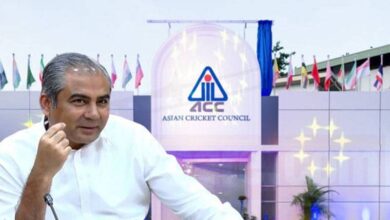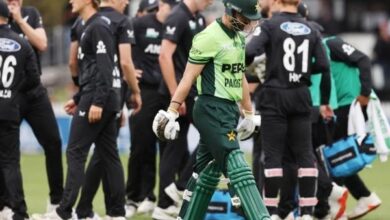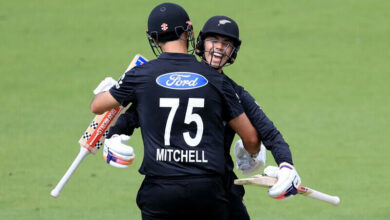Six-time champs India favourites in women’s Asia Cup


The seventh women’s Asia Cup kicks off in Malaysia on June 3. This will be the third successive edition that will be played in the T20 format. Six teams – India, Pakistan, Sri Lanka, Bangladesh, Thailand and Malaysia – will compete over eight days for the title. The winners will get the perfect leg-up in form and confidence as they build towards Women’s World T20 in the Caribbean in November. Here’s how the teams stack up ahead of the tournament.
India v Pakistan: the unfamiliar in a familiar rivalry
June 18. Champions Trophy final. Sarfraz Ahmed’s men topple the favourites in front of a sell-out crowd. Two weeks later, India women comfortably emerged victors in front of a full house Derby at the Women’s World Cup. No surprises then that this contest (on June 9) will be one of two games – final being the other – to be televised.
In the women’s arena, their previous T20I memorably ended in India captain Harmanpreet Kaur spearing a stump back into the hole to celebrate the side’s sixth straight title victory, in Bangkok in 2016. Freshly relieved from T20 captaincy, Mithali Raj drove India’s title-winning 2016 Asia Cup campaign with a chart-topping tally. For runners-up Pakistan, Javeria Khan carried the mantle with an average roughly half of Raj’s 110.
In the 18 months since, Raj’s wavering form has coincided with India’s away-from-home triumph against South Africa in January and big-margin defeats in a forgettable T20I tri-series against England and Australia at home in March. Pakistan, meanwhile, recovered from a 4-0 clean-sweep in the T20I series against New Zealand to clinching their maiden double-series win in Sri Lanka in March courtesy a record ODI hundred and a record T20I fifty from Javeria.
India’s pursuit of a seventh straight Asia Cup title could be tested by a resurgent Pakistan, under new coach Mark Coles. The return of senior batsman Nain Abidi, who, along with frontline spinner Nida Dar topped the runs and wickets charts respectively in the domestic T20 competition, will boost their line-up. Yet Pakistan will have to contend with Australia-humbling, England-numbing one-woman force: Smriti Mandhana and India’s plethora of left-arm spinners, including Ekta Bisht – the leading wicket-taker at the 2016 edition and the overall experience India’s players may have drawn from the IPL-styled T20 challenge.
Bangladesh 2.0?
Their only Asia Cup win came on debut, against Sri Lanka in 2012. They haven’t played a subcontinental side since 2016 and were beaten 5-0 and 3-0 in the ODIs and T20Is away by South Africa. Now, they have a new head coach in India’s Anju Jain. Can the tide turn?
They will hope Fargana Hogue (leading run-getter during the South Africa series), medium-pacer Panna Ghosh (involved in two record lower-order partnerships for Bangladesh) and Shamima Sultana (only Bangladesh batsman to score a fifty each in the ODI and T20I series) continue their recent run of form.
The bigger picture, of course, remains the World T20 Qualifiers in Netherlands in July. What better way to prepare than a competitive Asia Cup? Meanwhile, Rumana Ahmed will join team-mates Jahanara Alam and Khadija-Tul Kubra in the Women’s Global Development Squad for matches against the Kia Super League sides soon after the Qualifiers.
Sri Lanka’s injury woes
In a tournament featuring non-ODI nations Thailand and Malaysia, Sri Lanka would ideally fancy a top-three finish. They have been the runners-up four times in the six editions of the Asia Cup.
Despite their two recent consecutive defeats – against West Indies away and against Pakistan at home – Sri Lanka may have still backed themselves to put on a typically strong showing. Now, they have to do it without T20I captain Chamari Atapattu and pace-bowling allrounder Ama Kanchana. Four years after relinquishing the captaincy, Shashikala Siriwardene is back to helm the side. Can she rise to the challenge?
Players to watch
Pakistan’s Javeria Rauf returns after a four-year layoff. Her surprise recall is down largely to three half-centuries that made her the second-highest run getter in the four-team domestic T20 competition. Her team, the PCB XI, eventually finished runners-up.
Another player on a comeback trail is Bangladesh’s Shamima Sultana. The wicketkeeper marked her international return by scoring a half-century each in the ODI and T20I series in South Africa. Her boundary-hitting aptitude could bolster her team’s chances of pulling off an upset or two in the competition.
Expect the teenaged Jemimah Rodrigues and Pooja Vastrakar to inject vigour into India’s ailing T20 health. On the traditionally road-like Kinrara Oval tracks and the shortish boundaries of the Royal Selangor Club, Rodrigues’ resolve at the top of the order would be vital in propping up a red-hot Mandhana during India’s last big T20 assignment before the World T20. Should India lose a wicket early, Vastrakar, who famously hit the nervy winning runs in the one-off IPL exhibition game, could earn a promotion. Can she showcase her natural flamboyance in the Powerplay?




